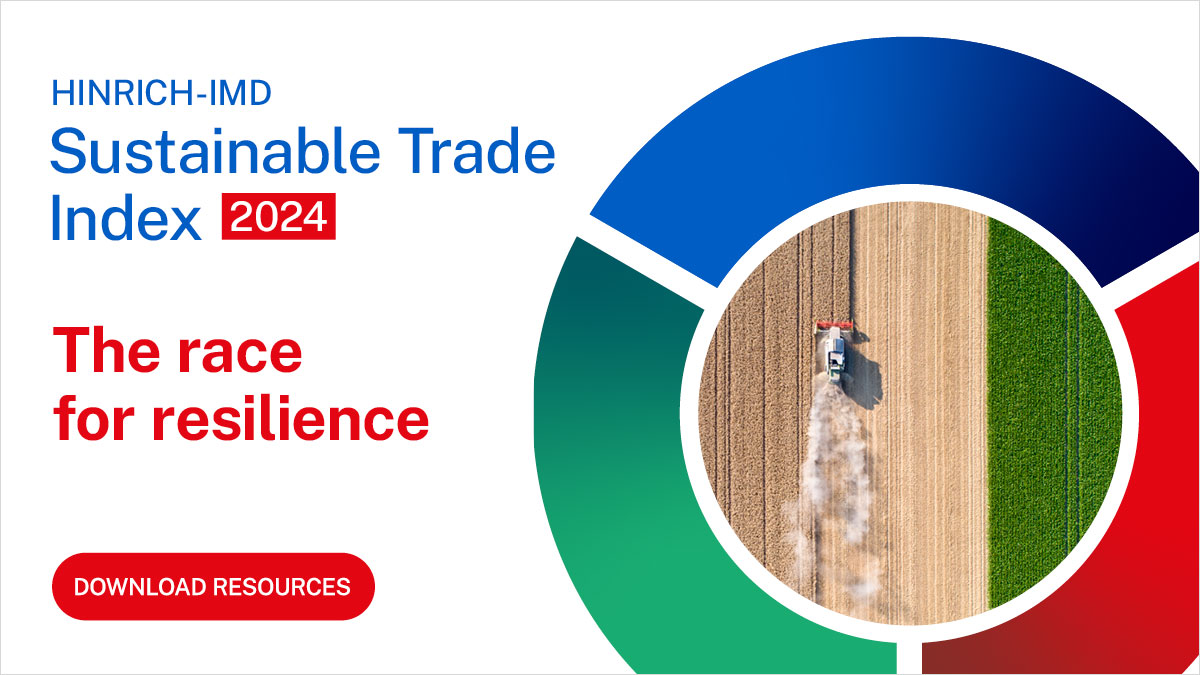Published 12 November 2024
Government debt levels are a crucial indicator of economic stability. It influences foreign direct investment, an economy’s capacity to trade, and overall economic growth. Drawing on the findings of the 2024 Hinrich-IMD Sustainable Trade Index, Visual Capitalist illustrates the varying government debt levels across 30 major economies, with Brunei at the lowest and Japan at the highest.
(Text by Jia Hui Tee)
The government debt rankings in the 2024 Hinrich-IMD Sustainable Trade Index (STI) provide an insight into the fiscal health and investment attractiveness of economies. This year's rankings of the STI’s 30 economies reflect the nuanced interplay between gross government debt and net FDI inflows, highlighting unique characteristics and policies that shape each economy's standing.
Still, high public debt levels don’t always indicate weak economies. Governments often boost growth by running deficits, whether budget or trade or revenue, which incurs debt. Their ability to pay down the debt is what matters more.
As Visual Capitalist illustrates in this second instalment of a series showcasing the findings of STI 2024, Brunei ranked first with the lowest levels of public debt, while Hong Kong placed second and Russia third. Japan, Singapore, and Laos had the most.
Evaluating government debt and investment potential
 Source: Hinrich-IMD Sustainable Trade Index 2024 rankings
Source: Hinrich-IMD Sustainable Trade Index 2024 rankings
- Brunei ranks first with the lowest government debt levels across 30 STI economies. It exemplifies fiscal prudence yet struggles to attract diverse foreign investments due to its heavy dependence on oil and gas exports. This reliance limits its appeal to investors looking for varied opportunities beyond the energy sector.
- Taiwan features low government debt (4th position) but substantial outbound FDI. This is driven by a mature domestic market and proactive government policies encouraging outward investment.
- Although Russia maintains relatively low levels of government debt (3rd position), which might typically signal a stable economic environment conducive to FDI, the imposition of sanctions against Russia by major western economies has significantly impacted its attractiveness to foreign investors.
- Japan’s high government debt levels place it last in the rankings (30th position). Despite its economic sophistication and technological prowess, Japan’s substantial debt burden alongside demographic challenges could potentially deter foreign investors concerned about long-term fiscal sustainability and economic stability.
- Singapore remains a top destination for FDI despite high gross government debt as a percentage of GDP (29th position). This anomaly is due to its robust financial system, stable political environment, and strategic location. Most of Singapore’s debt is held domestically, minimizing external vulnerabilities.
Implications for sustainable trade
Understanding the relationship between government debt and FDI is crucial for assessing the sustainability of trade practices. While high debt levels can be a red flag, other factors such as political stability, strategic economic policies, and natural resource management play significant roles in attracting investment and contributing to economic growth.
The STI measures 72 indicators across three pillars – economic, societal, and environmental. It underscores the complexity of achieving economic stability, as well as equitable and balanced growth. The Index includes other economic indicators such as consumer price inflation, labor force participation, logistics performance, tariff and non-tariff barriers, among others.
Access more insights and data on the Hinrich-IMD Sustainable Trade Index by downloading the STI 2024 report and interactive index.
© The Hinrich Foundation. See our website Terms and conditions for our copyright and reprint policy. All statements of fact and the views, conclusions and recommendations expressed in this publication are the sole responsibility of the author(s).







